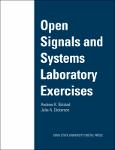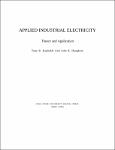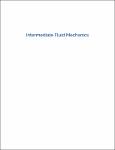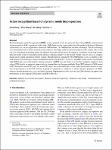Search
Author
- Anahita, Khodadadi (1)
- Andrew, K. Bolstad (1)
- Awwad, Nasser (1)
- James, Liburdy (1)
- next >
Subject
- Architecture Students (1)
- Career and Tecucation (1)
- DMD (1)
- Electronic Technolog (1)
- next >
Has File(s)
- true (7)
Search Results
Open Signals and Systems Laboratory Exercises is a collection of lab assignments that have been used in EE 224: Signals and Systems I in the Department of Electrical and Computer Engineering at Iowa State University. These lab exercises have been curated, edited, and presented in a consistent format to improve student learning. |
This book focuses on the hot topics related to nuclear power plants. The first of these hot topics is how to use nuclear power plants to generate electric energy using nuclear fuel such as Uranium Oxide (UOX). The second hot topic provides an advanced level of understanding of the complete fuel cycle by following nuclear fuel from its origin and fabrication, through its stay in the reactor with all alterations induced there, and ending with reprocessing options and waste management issues for the spent nuclear fuel. In other words; “Nuclear Power Plants - Processes in the Nuclear Fuel Cycle” |
Overview: This free electrical engineering/technology textbook provides a series of chapters covering electricity and electronics. The information provided is great for students, makers, and professionals who are looking for an application-centric coverage of this field. |
The book focuses on the fundamental bases of software and hardware. Specific products and tools are mentioned only if they have outstanding characteristics. Again, this is in-line with the ARTIST guidelines: “It seems that fundamental bases are really difficult to acquire during continuous training if they haven’t been initially learned, and we must focus on them” [85]. As a consequence, this book goes beyond teaching embedded system design by programming micro-controllers. The book presents the fundamentals of embedded systems design, which are needed for the design of CPS and IoT systems. With this approach, we would like to make sure that the material taught would not be outdated too soon. |
This book aims to narrate fundamental concepts of structural design to architecture students such that they have minimum involvement with math problem-solving. Within this book, students learn about different types of loads, forces and vector addition, the concept of equilibrium, internal forces, geometrical and material properties of structural elements, and rules of thumb for estimating the proportion of some structural systems such as catenary cables and arches, trusses, and frame structures. |
This book is meant to be a second course in fluid mechanics that stresses applications dealing with external potential flows and intermediate viscous flows. Students are expected to have some background in some of the fundamental concepts of the definition of a fluid, hydrostatics, use of control volume conservation principles, initial exposure to the Navier-Stokes equations, and some elements of flow kinematics, such as streamlines and vorticity. It is not meant to be an in-depth study of potential flow or viscous flow, but is meant to expose students to additional analysis techniques for both of these categories of flows. We will see applications to aerodynamics, with analysis methods able to determine forces on arbitrary bodies. We will also examine some of the exact solutions of... |
Based on dynamic mode decomposition (DMD), a new empirical feature for quasi-few-shot setting (QFSS) skeleton-based action recognition (SAR) is proposed in this study. DMD linearizes the system and extracts the modes in the form of flattened system matrix or stacked eigenvalues, named the DMD feature. The DMD feature has three advantages. The first advantage is its translational and rotational invariance with respect to the change in the localization and pose of the camera. The second one is its clear physical meaning, that is, if a skeleton trajectory was treated as the output of a nonlinear closed-loop system, then the modes of the system represent the intrinsic dynamic property of the motion. Finally, the last one is its compact length and its simple calculation without training.... |







